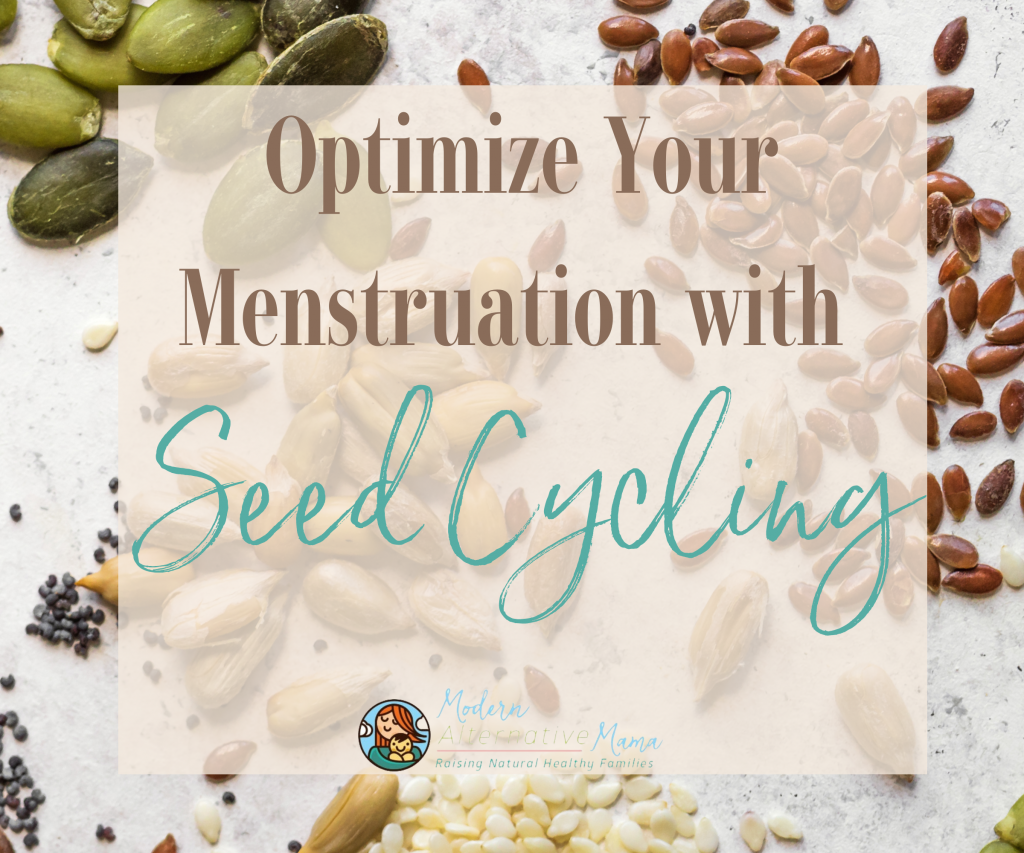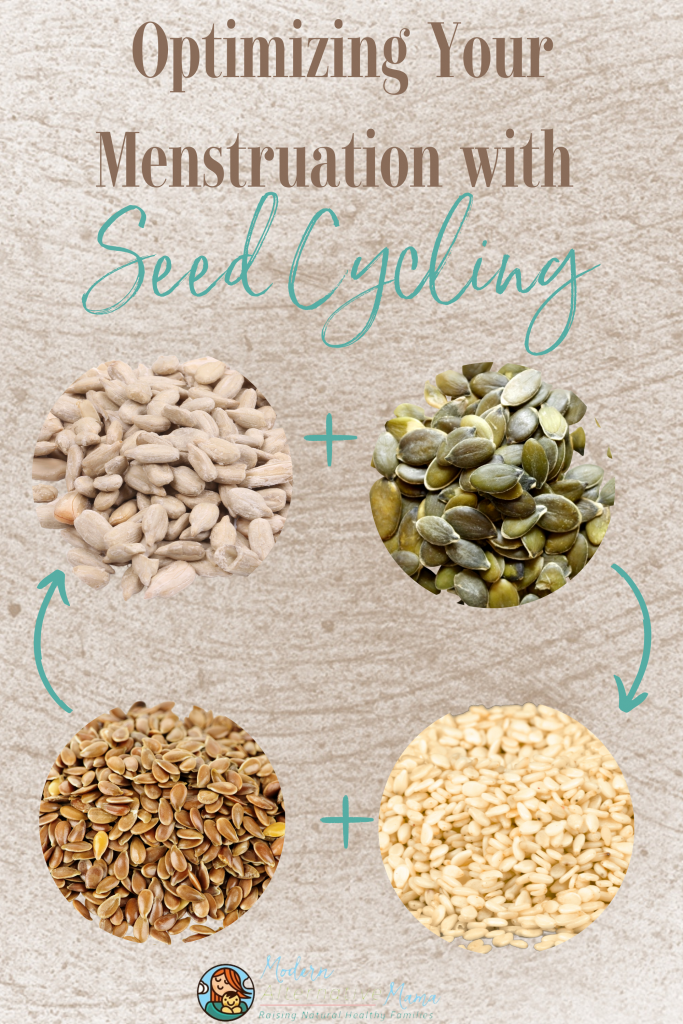By: Lindsey, contributing Writer
Did you know that seed cycling can help make your menstrual cycle not only manageable, but pretty gosh darn normal? People have seen massive improvements with PCOS, PMS, irregular cycles, infertility, and more! Seed cycling is a simple (I promise) way to nourish your body through its monthly cycle using pumpkin, flax, sesame, and sunflower seeds.
My Menstrual Cycle History
Ever since I got my first period, I have had hormonal headaches/migraines. When I was young and in high school, no one knew it was hormonal. To me, I would just get a “random” headache or migraine once a month. I didn’t know about tracking menstruation for PMS symptoms or anything. I just thought some people are prone to headaches and migraines. It wasn’t until after I had my son that I started to consider my cycle, my hormones, and how they affected my mood and overall well being.
The Truth About Your Cycle
The truth is, women shouldn’t find their cycles debilitating or really being such a burden that they can’t continue their day-to-day life. While this may be common in our modern society, it’s far from normal. This doesn’t mean that you shouldn’t honor your body if you’re feeling tired around menses, but you shouldn’t be laid up on the couch cringing in pain.
When I first heard a women’s health doctor say this, I scoffed. Hah, every woman I know has PMS or heavy periods or some sort of menstruation issues. Who is she even talking about? But I secretly hoped that was real. I wanted a good cycle. I didn’t want headaches, migraine, insomnia, anxiety and depression.
I started down the long path of understanding my body and my cycle at probably the hardest time for any woman, during postpartum, pregnancy, and postpartum again. While it took a while, I will tell you anytime is a good time to learn about your body. I had hormone panels run, saw several doctors, but no one really moved the needle for me. It was up to me to fix myself.
Hormones are Complex
Before I get into the exciting part of seed cycling, it needs to be said that it is not a cure all. The body is a complex system, and the female menstrual cycle is 4 phases, and there are so many other things that affect it. Sleep, adrenals, thyroid, and so much more. If you want to learn more about balancing your hormones beyond seed cycling, you can read more here.
Nurture Thy Self
The heart of seed cycling is nurturing your body. Seed cycling provides specific nutrients for the body at the right times during its cycle. The female cycle can be broken down into 4 stages:
- Menses/Period
- Follicular Phase
- Ovulation
- Luteal Phase
The seeds I mentioned earlier, pumpkin/flax and sesame/sunflower go with different phases of the cycle. These are a few things that need to be mentioned about the seeds. First is you need fresh, clean, organic seeds. This is really important. To experience all the benefits of seed cycling, you don’t want old, rancid seeds. Second is you want to grind your seeds as close to consumption as possible. This goes along with the first part. As soon as you grind those seeds, you’ve started the clock on the nutrients in them. The longer you wait to consume them, the less nutrients they have, and they can even go rancid. I store all my seeds in the freezer to keep them fresh.
How to Seed Cycle
An average woman’s cycle lasts 28 days, so I will use that as a base line. A lot of women see their cycle come close to this average once they’ve started seed cycling.
Day: 1-13 (Menses and Follicular Phase)
Primary Hormones: Estrogen and Testosterone
Seeds: Pumpkin and Flax
Amount: 1-2 tablespoon of each
Directions: Grind your seeds and add them to food. You can do nut butter, yogurt, smoothies, oatmeal, or whatever you think they’d go well with. You will consume one tablespoon of each seed for the first 14 days.
Why these seeds?
Pumpkin:
High in zinc (supports healthy testosterone levels) and antioxidants. Also has tryptophan, which helps with serotonin and melatonin production. These are both crucial for healthy sleep.
Flax:
High in lignans, slightly estrogenic, and do double duty. They provide estrogen if needed, but can also help escort out excess estrogen. It can also help reduce androgen levels that have been associated with PCOS, acne and excess hair(S) and reduce breast tenderness (S).
Day 14-28 (Ovulation and Luteal Phase)
Primary Hormones: Progesterone
Seeds: Sesame and Sunflower
Amount: 1-2 tablespoon of each
Directions: Grind your seeds and add them to food ( see list above for ideas). You will consume one tablespoon of each seed for the next 14 days.
Why these seeds?
Sunflower:
High in vitamin E, iron, calcium and selenium, all which help support the liver as it switches from one set of hormones to the other.
Sesame:
More zinc to help with that progesterone production! Also has lignans to continue to help escort out excess estrogen. May help reduce inflammation (S).
Once your period starts, the seeds reset and you start all over. That’s it, the basics of seed cycling! It may take a few cycles (most recommend trying it for at least 3 months) to see the full benefits. For me, I saw small improvements with my first cycle (better sleep and shorter headache) but I saw the biggest improvements at the 3 month mark. My cycle lengthened by 4 days. I used to be 24 days and am now consistently 28 unless I slack off on the seeds. I no longer have hormonal migraines or insomnia. Seed cycling along with supporting my liver (read about liver support for PMS here) and adrenals (adrenal cocktails and electrolytes) have made all the difference in my cycle.



